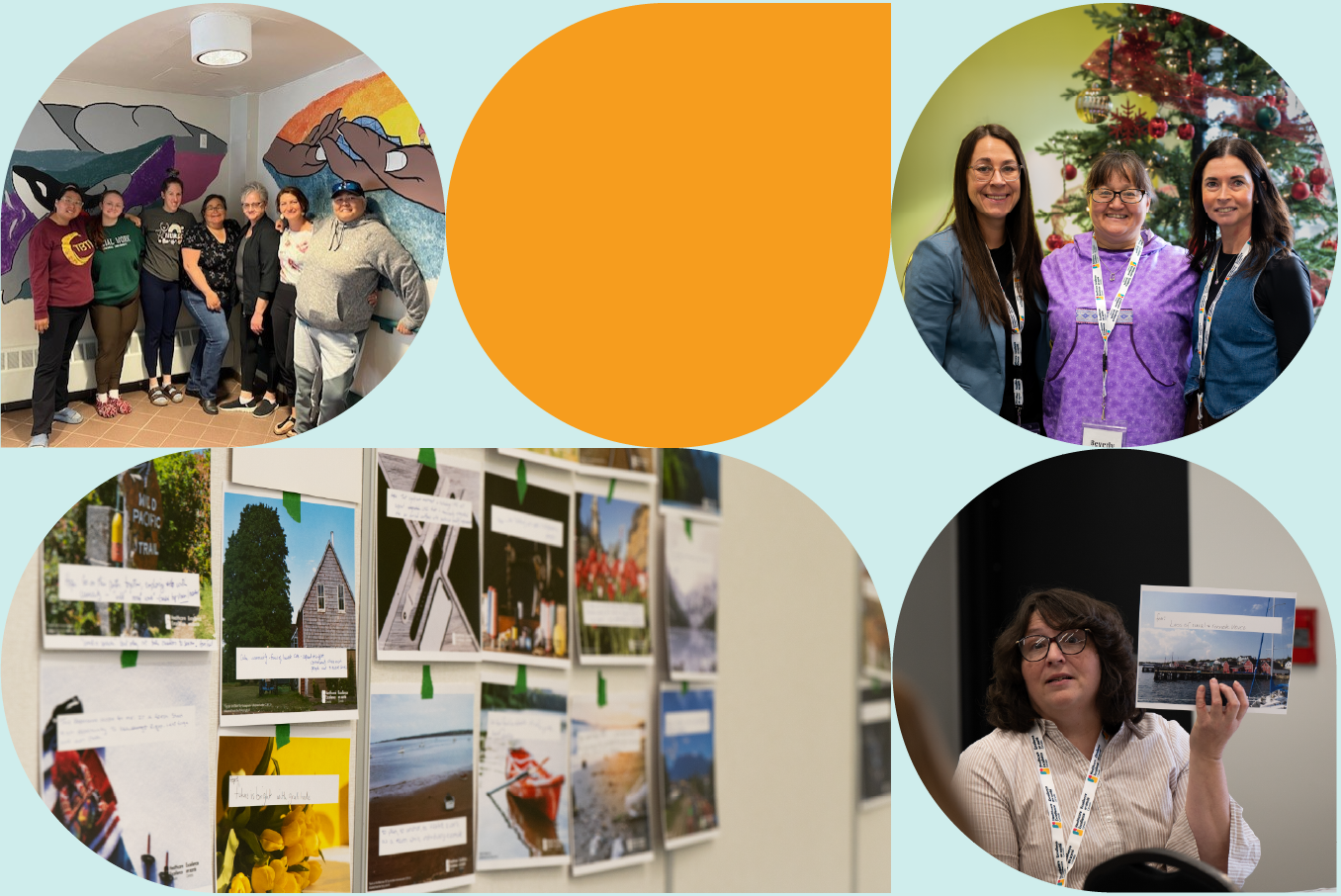On a fall day in 2024, healthcare leaders gathered in St. John’s for a workshop to share, learn, and identify ways to partner meaningfully to improve the safety and quality of healthcare for more people.
This growing network of local leaders, care teams, and patient partners were supported by HEC and Newfoundland and Labrador Health Services (NLHS) through programs like Strengthening Primary Care, Enabling Aging in Place, Improving Equity in Access to Palliative Care, and the Cultural Safety Design Collaborative.
Here's a closer look at some of the promising practices that were shared during the workshop.
A smoother path to family care team access in Conception Bay North
In Conception Bay North, patients were referred to family care teams for services like physiotherapy, nutrition, and other allied health support - even if they didn’t have access to team-based primary care or a family doctor.
A referral navigator helped bridge that gap. In just three months, 44 patients were connected to care through this model, with all patients sharing that they were satisfied. It’s a small change with system-wide potential.
Bringing care on the road to rural communities of central Newfoundland
In the Central Zone, primary care is on the move. Mobile primary healthcare teams travelled on weekends to provide services to people living in 40 small communities, offering appointments for chronic disease, mental health and addictions services, health system navigation, and more.
This approach reduced the need for long-distance travel, ensuring that care is delivered where people live - particularly important in rural and remote parts of the province. Over 300 appointments were booked in the span of one year through the model, with positive feedback from patients and providers.
Helping older adults return home in Corner Brook and St. John’s
In Corner Brook and St. John’s, new Acute Care for the Elderly (ACE) units are changing the experience of hospitalization for older adults. These units focus on early mobility, daily interdisciplinary rounding, and an early focus on discharge planning. The early results shared at the workshop were encouraging. Over five months, of the 186 patients admitted to ACE units at Western Memorial, 139 were discharged home - and only one was transferred to long-term care.
“I was always an independent person, and I’m still an independent person. I had a health issue and they helped me to feel well so I could get back to my life.” – ACE unit patient
With coaching from Dr. Samir Sinha and the Mount Sinai Team in Toronto, the approach was implemented first at Western Memorial then at St. Clare’s Mercy Hospital. The team is currently building a comprehensive older adult education and training program to support non-ACE units across the province enhance age-friendly care, starting with enrolling in the Nurses Improving Care for Healthsystem Elders (NICHE) education model.
Palliative care rooted in Inuit culture and community in Nain
In Nain, an improvement team is working towards a new model of palliative care with Inuit culture and community at its core. Historically, people requiring palliative care had to leave the region - often travelling hundreds of kilometers away from land, language, and loved ones.
With a focus on culturally safer care being delivered in community, they are working to support increased access for individuals in rural and remote communities. Whether supported at home or in a local clinic, palliative care will reflect traditional practices, values, and a connection to place.
How HEC and NLHS helped drive local impact
Through HEC’s programs and initiatives in 2024-2025, more than 1,200 people in the province have already received safer, higher-quality care. Another 30,000 are in reach as programs scale.
HEC’s role has been to accelerate what works – providing seed funding, coaching, practical tools, and peer learning networks that help local teams, with patient partners, lead change rooted in community insight, adapt solutions to local realities, and scale their impact with peer support from across Canada.
This progress is only possible with partners like the improvement teams and the support of NLHS, which dedicated resources and actively partnered with HEC and local teams to make room for these improvements to happen.
“This work shows the power of community-led innovation, backed by the right support,” said Jennifer Zelmer, President and CEO of Healthcare Excellence Canada. “Together, we’re creating care that counts — grounded in trust, equity and learning.”
“We’re seeing how ideas, when supported, can spark local improvements, improvements that can have system-wide potential” said Tina Edmonds, Acting Vice President, Quality and Learning Health System, NL Health Services. “These stories aren’t the exception — they’re a glimpse of what’s possible when we work together.”
The momentum is growing, and the story isn’t over. To explore more examples of how we're creating care that counts with local teams across Canada, read our latest Impact Report.
